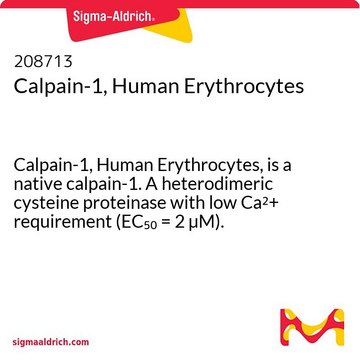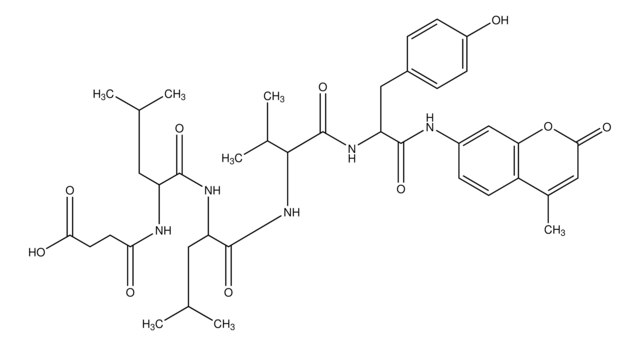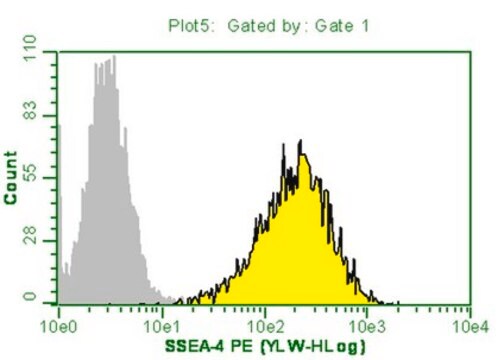QIA120
Calpain Activity Assay Kit, Fluorogenic
About This Item
Empfohlene Produkte
Verwendung
sufficient for 96 tests
Qualitätsniveau
Verpackung
pkg of 1 96-well plate(s)
Hersteller/Markenname
Calbiochem®
Lagerbedingungen
OK to freeze
avoid repeated freeze/thaw cycles
protect from light
Aufnahme
sample type serum
sample type plasma
sample type cell lysate
Nachweisverfahren
fluorometric
Versandbedingung
wet ice
Allgemeine Beschreibung
Komponenten
Warnhinweis
Spezifikationen
Angaben zur Herstellung
Lagerung und Haltbarkeit
Hinweis zur Analyse
Calpain 1
Sonstige Hinweise
Glading, A., et al. 2000. J. Biol. Chem.275, 23908.
Ishikara, I., et al. 2000. Neurosci. Lett.279, 97.
Nakagawa, T. and Yuan, J. 2000. J. Cell Biol.150, 887.
Pariat, M., et al. 2000. Biochem. J.345, 129.
Pink, J.J., et al. 2000.Exp. Cell Res.255, 144.
Wang, K.K. 2000. Trends Neurosci.23, 20.
Reddy, R.K., et al. 1999. J. Biol. Chem.274, 28476.
Leist, M., et al. 1998. Mol. Pharmacol.54, 789.
Melloni, E., et al. 1998. J. Biol. Chem.273, 12827.
Villa, P.G., et al. 1998. J. Cell Sci.111, 713.
Wood, D.E., et al. 1998. Oncogene17, 1069.
Kubbutat, M.H. and Vousden, K.H. 1997. Mol. Cell Biol.17, 460.
Molinari, M. and Carafoli, E. 1997. J. Membr. Biol.156, 1.
Sorimachi, H., et al. 1997. Biochem. J.328, 721.
Squier, M.K. and Cohen, J.J. 1997. J. Immunol.158, 3690.
Aoki, K., et al. 1986. FEBS Lett.205, 313.
Ohno, S., et al. 1986. Nucleic Acid Res.14, 5559.
Rechtliche Hinweise
Signalwort
Danger
H-Sätze
Gefahreneinstufungen
Repr. 1B
Lagerklassenschlüssel
6.1C - Combustible acute toxic Cat.3 / toxic compounds or compounds which causing chronic effects
Analysenzertifikate (COA)
Suchen Sie nach Analysenzertifikate (COA), indem Sie die Lot-/Chargennummer des Produkts eingeben. Lot- und Chargennummern sind auf dem Produktetikett hinter den Wörtern ‘Lot’ oder ‘Batch’ (Lot oder Charge) zu finden.
Besitzen Sie dieses Produkt bereits?
In der Dokumentenbibliothek finden Sie die Dokumentation zu den Produkten, die Sie kürzlich erworben haben.
Unser Team von Wissenschaftlern verfügt über Erfahrung in allen Forschungsbereichen einschließlich Life Science, Materialwissenschaften, chemischer Synthese, Chromatographie, Analytik und vielen mehr..
Setzen Sie sich mit dem technischen Dienst in Verbindung.









